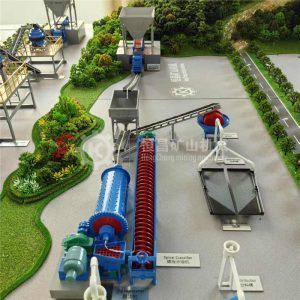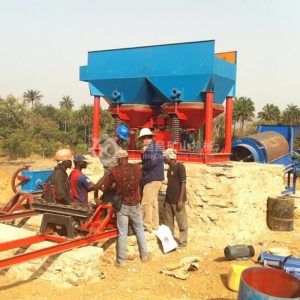Brief Introduction of Fluorite Ore Beneficiation
2025-11-14 10:55:33
Fluorite is an important non-metallic mineral widely used in metallurgy, chemical industry, building materials, and optics. Fluorite is often associated with quartz, calcite, barite, and sulfide minerals.

The beneficiation methods for fluorite ore vary depending on the ore type, mineral composition, and grade. Currently, the main beneficiation methods for fluorite ore in China are hand sorting, gravity separation, and flotation.
I. Hand Sorting (Simple Pre-selection)
Principle: Based on the difference in ore color, high-grade fluorite lumps are manually selected.
Suitable for: Ore with coarse intercalation, and a significant color contrast between fluorite and gangue (e.g., fluorite is bluish-green or purple, with a large color difference from the gangue).
Commonly used for pre-selection of rich ores or initial beneficiation of raw ore. It is highly efficient but relies on manual labor and is suitable for small mines or primary screening.
II. Gravity Separation
Principle: Based on the difference in mineral density, different minerals are separated according to their difference in settling velocity in a medium flow (usually water).
Applications: Primarily used for processing coarse-grained fluorite ore, especially when associated with heavy minerals (such as galena and sphalerite). Often used as an auxiliary or pre-selection method, for example, to discard tailings before flotation.
The equipment used for gravity separation of fluorite ore is a jig, suitable for separating high-grade ores. Gravity separation is widely used in mines with large particle sizes and high grades, offering advantages such as simple structure, convenient operation, and high efficiency.

III. Flotation (Most Commonly Used)
Principle: Utilizing the differences in the physicochemical properties of mineral surfaces, particularly the difference between hydrophobic and hydrophilic properties, by adding collectors, frothers, and other reagents, fluorite selectively adheres to air bubbles and floats to the surface, thus separating from gangue minerals.
Features:
• Currently the most effective method for separating fluorite from gangue minerals (such as calcite and quartz).
• Flexible process; reagent formulation can be adjusted according to ore properties.
• Can obtain high-grade fluorite concentrate.